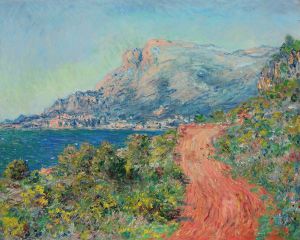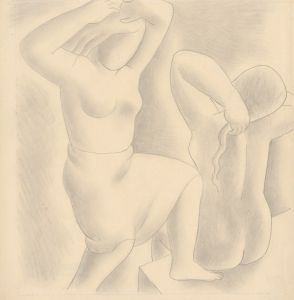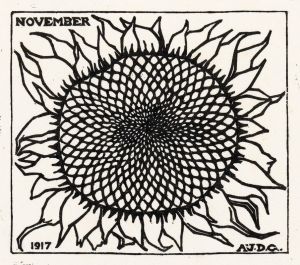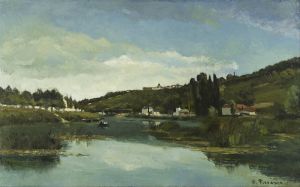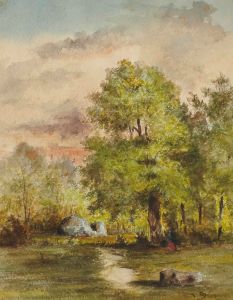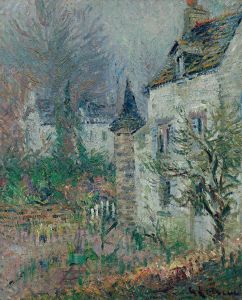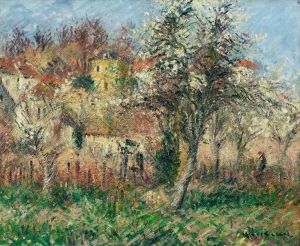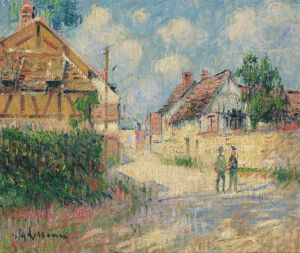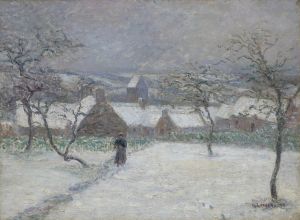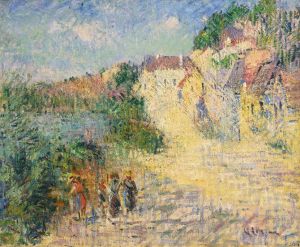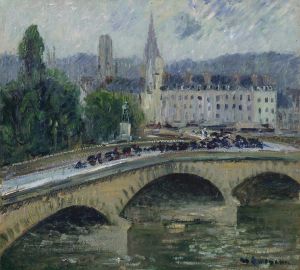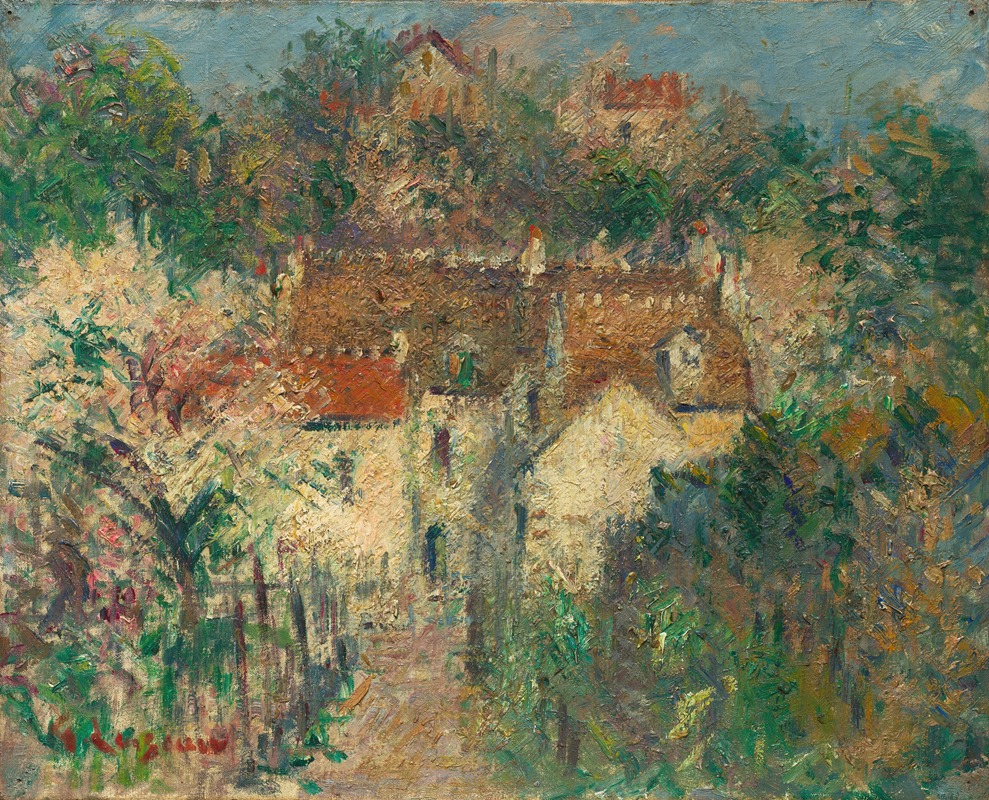
Vue de village
A hand-painted replica of Gustave Loiseau’s masterpiece Vue de village, meticulously crafted by professional artists to capture the true essence of the original. Each piece is created with museum-quality canvas and rare mineral pigments, carefully painted by experienced artists with delicate brushstrokes and rich, layered colors to perfectly recreate the texture of the original artwork. Unlike machine-printed reproductions, this hand-painted version brings the painting to life, infused with the artist’s emotions and skill in every stroke. Whether for personal collection or home decoration, it instantly elevates the artistic atmosphere of any space.
Gustave Loiseau (1865–1935) was a French Post-Impressionist painter known for his landscapes and scenes of rural life. His work is characterized by a focus on capturing the natural beauty and changing light of the French countryside, often employing a technique known as "en plein air" painting, which involves painting outdoors to directly observe the subject matter.
"Vue de village" is one of Loiseau's many works that depict rural scenes, showcasing his interest in the interplay of light and atmosphere. While specific details about this particular painting are limited, it is consistent with Loiseau's broader oeuvre, which frequently features village scenes, riverbanks, and rural landscapes. His paintings often reflect the influence of Impressionism, with a focus on light, color, and brushwork that captures the essence of the scene rather than its precise details.
Loiseau was part of a group of artists who were influenced by the Impressionist movement, though he developed his own distinctive style. He was particularly known for his use of a technique called "cross-hatching," where he applied layers of short, intersecting brushstrokes to create texture and depth. This technique is evident in many of his works and contributes to the vibrancy and dynamism of his landscapes.
Throughout his career, Loiseau traveled extensively across France, painting scenes from various regions, including Normandy, Brittany, and the Île-de-France. His works often depict the changing seasons, capturing the unique qualities of light and color associated with different times of the year. This focus on the transient effects of light and weather is a hallmark of his style and aligns with the broader goals of the Post-Impressionist movement, which sought to build upon the innovations of Impressionism while exploring new artistic directions.
Loiseau's paintings are held in numerous public and private collections worldwide, and he exhibited regularly at the Salon des Indépendants and the Salon d'Automne in Paris. His work was well-received during his lifetime, and he was part of a circle of artists that included notable figures such as Camille Pissarro and Paul Signac.
While "Vue de village" may not be as widely recognized as some of Loiseau's other works, it exemplifies his dedication to capturing the serene beauty of rural France. His paintings continue to be appreciated for their ability to convey the tranquility and charm of the countryside, as well as their technical skill and innovative use of color and brushwork.
In summary, Gustave Loiseau's "Vue de village" is a testament to his skill as a landscape painter and his commitment to capturing the essence of rural life in France. Through his distinctive style and technique, Loiseau has left a lasting legacy in the world of Post-Impressionist art.





